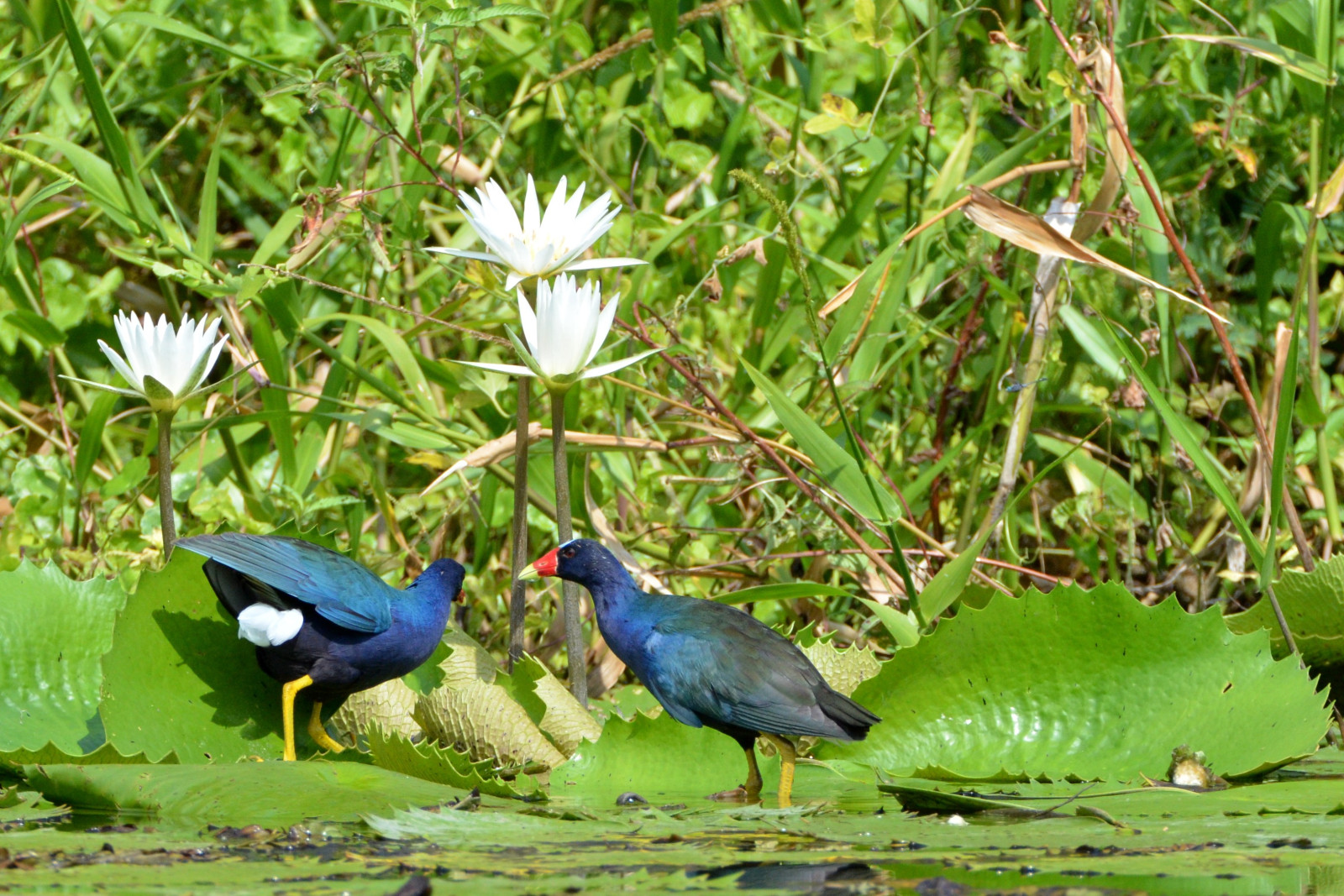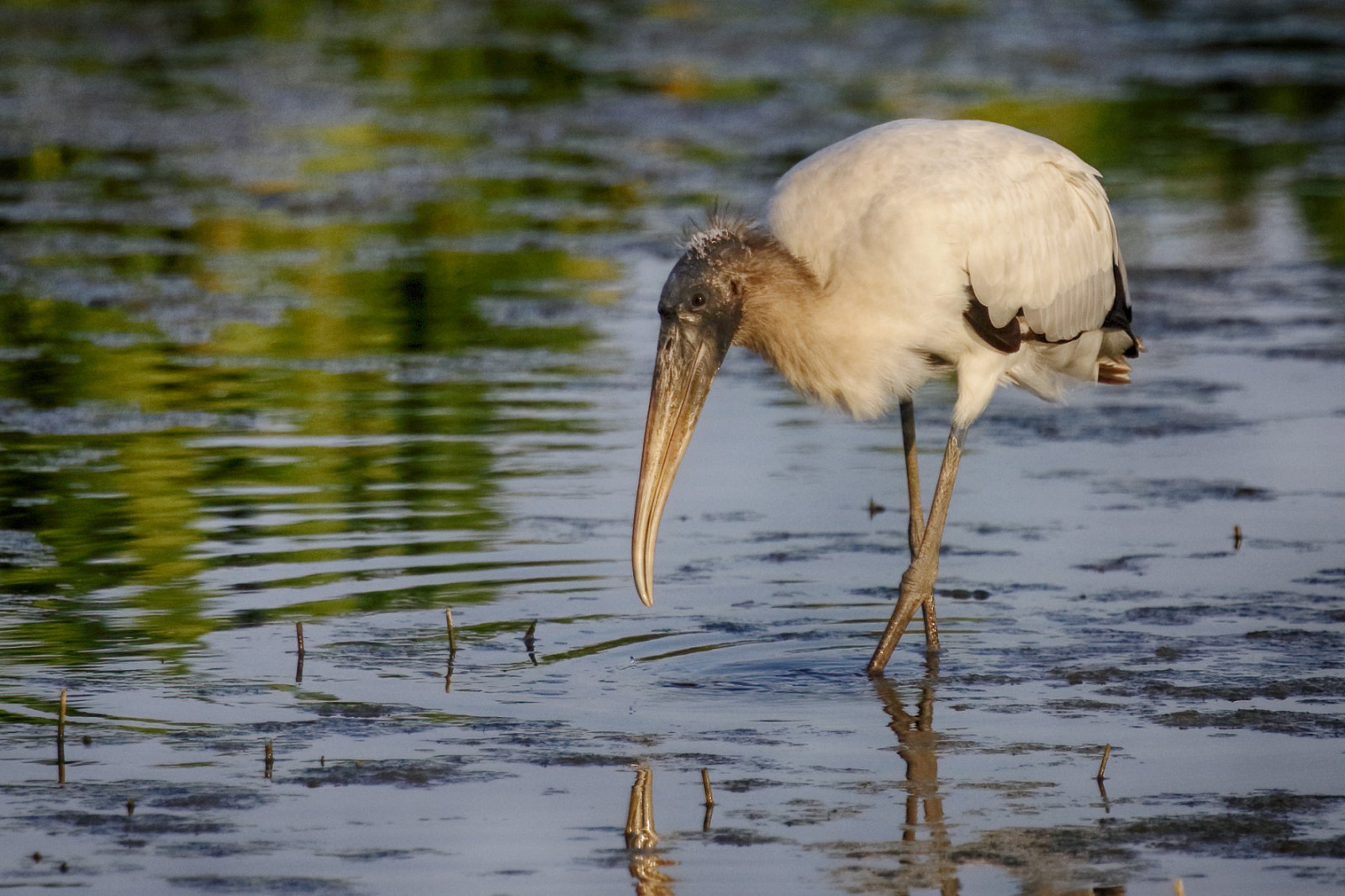Opis
Many species of shorebirds are attracted to Reserve Naturelle de l'Amana. They find food and rest on the beaches, mudflats and lagoons located between the ocean and the rice fields. It is also one of the very rare places in Guyana where you can observe ducks.
Certain areas outside the reserve are also particularly interesting: this is the case of the Mana rice fields which attract many species (herons, birds of prey, shorebirds), the Irakompapi creek, the Panato marsh located near the Maison de the Amana reserve, and the Coswine marsh located a little further south. Among the birds you can observe are Snail Kite, Crested Oropendola, White-headed Marsh Tyrant, Pied Water-Tyrant, Great Black Hawk, Mouse-colored Tyrannulet, Russet-crowned Crake, Laughing Falcon, White-chested Emerald, White-barred Piculet, Little Woodpecker, Plain-bellied Emerald, Blue-tailed Emerald, Green Aracari, Green-tailed Jacamar, Spot-breasted Woodpecker, Black-crested Antshrike, Yellow-rumped Cacique, Greyish Saltator, Zone-tailed Hawk, Brown-throated Parakeet, Black-capped Donacobius, Scarlet Ibis, Wood Stork, Roseate Spoonbill, American Flamingo, Ashy-headed Greenlet, Long-winged Harrier, Large-billed Tern, Black Skimmer, Red-bellied Macaw, Yellow Oriole, Yellow-hooded Blackbird, Red-breasted Meadowlark, Yellow-billed Tern, Cocoi Heron, Ash-throated Crake, Little Cuckoo, Spotted Tody-Flycatcher, Buff-breasted Wren, Black-collared Hawk, Azure Gallinule, Crimson-hooded Manakin, Straight-billed Woodcreeper, Green-throated Mango, Masked Yellowthroat, Savanna Hawk, Chestnut-vented Conebill, Black Swift, White-tailed Goldenthroat and Yellow-breasted Crake.
________________________
Français: Cette réserve est située à l’extrême nord-ouest de la Guyane, sur les communes d’Awala-Yalimapo et de Mana afin de proteger les tortues marines. De nombreuses espèces de limicoles viennent également séjourner dans cette réserve où ils profitent des plages, des vasières et des lagunes situées entre l’océan et les rizières. C’est aussi l’un des très rares endroits de Guyane où l’on peut observer des canards. Certaines zones en dehors de la réserve sont également particulièrement intéressantes : c’est le cas des rizières de Mana qui attirent de nombreuses espèces (hérons, rapaces, limicoles), de la crique Irakompapi, du marais de Panato situé à proximité de la Maison de la réserve de l’Amana, et du marais de Coswine situé un peu plus au sud.
Szczegóły
Dostęp
From the town of Mana in the northwest, take the D22 to the end, you can park at the office of Reserve Naturelle de l'Amana. Click on the P in the map for directions or coordinates.
________________________
Français: Depuis la commune de Mana au nord-ouest, prendre la D22 jusqu'au bout, vous pouvez sur le parking de la maison de la réserve.



